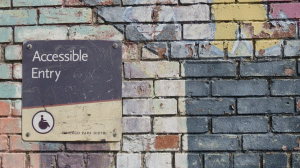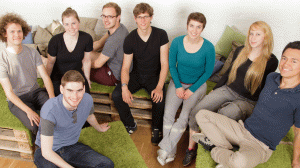Who is responsible for implementing sustainable development actions? And how and in which form can we achieve sustainable development? This article gives an overview on SDG implementation at different geographic levels, shows how the concept of Glocalization can help to achieve sustainable development, and offers an introduction to three forms of collaboration for transformative change that are deepened at this year’s Transformation Literacy Conference week.
As a reader of tbd you know about the Sustainable Development Goals (SDGs) and the United Nations ambitious Agenda to achieve these goals by 2030. No matter whether you find these goals useful or not, the fact is that the world community is far behind in achieving them. The global pandemic, new and ongoing wars and conflicts, as well as government’s lip services are often seen as main reasons why we are not further advanced in implementing these ambitious sustainability transformations. But are these really the key reasons, or is it worth digging deeper and exploring reasons and finding solutions that go beyond the bashing of top-level decision-makers?
© United Nations (https://www.un.org/sustainabledevelopment) The content of this publication has not been approved by the United Nations and does not reflect the views of the United Nations or its officials or Member States.
Efforts to drive sustainability transformations need to connect local, national, regional, and international efforts. In the world of the 2020s, no pure top-down approach will lead to success in implementing the SDGs. The highest level – the UN – does not have the mandate and power to implement them, as they are not legally binding. Regional coalitions might be more powerful and could – e.g. in the case of the European Union – implement SDG actions at large-scale.
However, the revival of block-building in regional alliances causes contradictions and competing strategies that hinder a holistic approach on sustainable development. On the national level, a few states perform quite well, however, the majority have other top priorities rather than SDG implementation. And on the local level, top-down approaches are very limited per se, and global effects on measures remains low if these activities are not coordinated and done in isolation.
However, the local level is of paramount importance when it comes to implementing the SDGs. We spend most of our lifetime in our city or community, this is where change is best visible to us, and if this change is sustainable and perceived as positive, it has the highest chance to make us “buy-in” to the Agenda 2030. And at this local is the place where the complex goals that are coming from the holistic perspective of the UN level become achievable.
What we really need is to combine the best of the top-down decision on the SDGs as a guiding framework for transforming towards a sustainable world and the bottom-up activities of local actors. We may call this new process that needs to happen ‘Glocalization’.
Unlike globalization, which is often perceived as an economic process for free trade and ultimate competition for the highest productivity through scaling effects, Glocalization takes into account the local specifics and highlights diversity as a strength for creating more systems resilience instead of equalizing for the highest productivity.
At the same time, Glocalization considers the good sides of globalisation such as open borders, free flow of and access to ideas and knowledge, and contributing to the global challenges we face in a holistic way. Therefore, identifying ways for the SDGs to truly go ‘glocal’ is pivotal for their achievement.
Indeed, a diverse multitude of networks, communities of practice, initiatives, partnerships, and global transformation projects aim to do just that already. Their approaches to localizing SDG contributions are as varied as their diverse forms. This diversity of formats makes it sometimes difficult to understand the purpose, complexity, and impact of such activities, especially as our mind- and do-sets too often still focus on achieving concrete results, instead of also paying attention to achieving relationship- and process goals.
A good example is when we reflect on the Corona pandemic: by purely focussing on concrete goals individually (ranging from one extreme like “I want my freedom as it was before the pandemic” to the other extreme of “I isolate myself until the whole thing is over”) and collectively (government actions ranging from a complete “let it go and keep everything open” policy to the other extreme of a “complete lock-down and isolation”), processes have very often been reflected and adjusted too late, and relationships between people and countries broke instead of trying to balance different views out. Therefore, we are still in the phase of cleaning up the mess, both individually and collectively.
If you look at the SDGs, you will find that the relationship- and process goals are the core of SDG 17 – partnerships for the goals. The different forms of collaborating at all levels, from local to global, are the glue that puts all the different puzzle pieces of achieving sustainable development together.
However, it is often unclear which formats fit best which purposes and many transformation efforts lack performance or even fail for the simple reason of lacking collaboration.
Therefore, at this year’s annual Transformation Literacy Conference, the Collective Leadership Institute (CLI) focuses on how different forms of transformation efforts, such as networks, partnerships, and global meta-collaborations – all contribute to localizing the SDGs.
Multi-stakeholder initiatives and partnerships as one form of SDG localization align goals and activities, and often pool resources for joint action. They are more and more known and practiced for tackling e.g. global supply chain sustainability challenges. However, there are also many local and national multi-stakeholder partnerships that address multiple SDGs.
Another form of localizing SDGs are peer learning networks, communities of practice and other types of exchange networks. They offer space for joint reflection, consultation and coordinating action, often on a less formal basis and with a lower level of complexity than partnerships, but again on many different levels ranging from local community networks to international expert exchange groups.
Finally, large, collaborative meta-networks and projects spanning regions and countries emerge more frequently e.g. with the urgency of the climate crisis. This meta-collaboration when several partnerships align their activities, or networks of networks emerge, have the largest transformative potential, and at the same time face the highest level of complexity.
If you are interested to learn more when which form of collaboration is appropriate to localize SDGs and create transformative change, or if you want to dive deeper into one of this form together with international experts, each of the Transformation Literacy Conference days 22, 24, 26 April will focus on one of different formats. Each online session will kick-off with a framing by CLI, continues with three international speakers from different continents, and then offers time for exchange with these experts and among fellow participants in break-out rooms. There is also a virtual “marketplace” for pitching SDG localization ideas throughout the whole conference.
You can learn more about the conference sessions, the speakers, and register here: https://www.collectiveleadership.de/blog/event/tlc/.
© Collective Leadership Institute
About the Collective Leadership Institute: CLI’s vision is to empower future-oriented people to lead collectively towards a sustainable future. With our Capacity Building Programmes, our Transformation Support, our Collective Leadership Hubs Network, and our Research, we build competence for sustainability. The institute has been operating since 2005 and has offices in Germany and South Africa, and branch offices in Egypt, Ukraine, and the United States.










